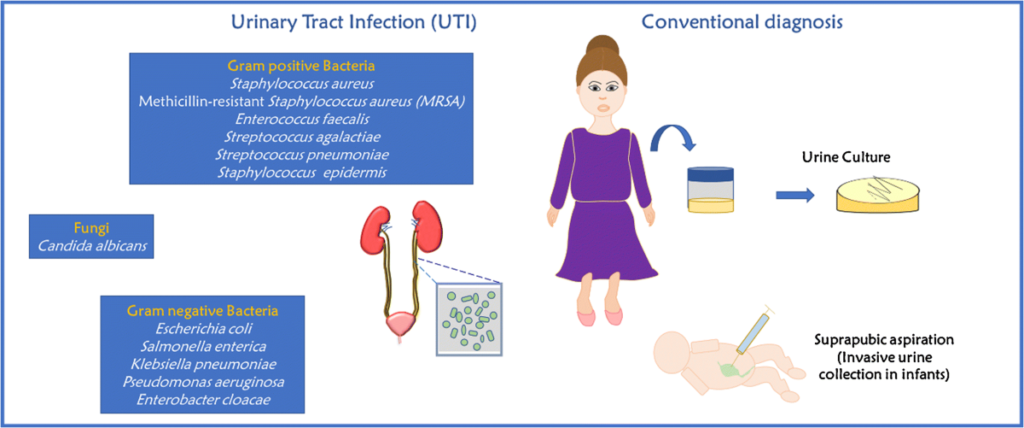What Is a Candidal Urinary Tract Infection?
Candidal urinary tract infection (UTI) is a fungal infection of the urinary system caused by species of the Candida genus, most commonly Candida albicans. While less prevalent than bacterial UTIs, candidal UTIs are significant, particularly in individuals with weakened immune systems or indwelling urinary catheters.

Causes and Risk Factors
Candidal UTIs typically arise due to the following factors:
- Indwelling Urinary Catheters: Prolonged catheter use can introduce Candida into the urinary tract.
- Immunosuppression: Conditions like diabetes, HIV/AIDS, and chemotherapy increase susceptibility.
- Antibiotic Use: Broad-spectrum antibiotics disrupt normal microbial flora, promoting fungal overgrowth.
- Hospitalization: Increased exposure to healthcare settings raises the risk of fungal infections.
Symptoms of Candidal UTI
Candidal UTIs can be asymptomatic or present with typical urinary tract infection symptoms such as:
- Frequent and urgent need to urinate.
- Burning sensation during urination.
- Lower abdominal or pelvic pain.
- Cloudy or foul-smelling urine.
- Fever and chills (in severe cases).
Diagnosis of Candidal UTI
Laboratory Testing
Accurate diagnosis involves laboratory testing, including:
- Urine Culture: Detects fungal growth, often confirming Candida species.
- Microscopic Examination: Identifies fungal elements in urine samples.
- Blood Tests: Checks for systemic fungal infections in severe cases.
Imaging Studies
In cases of persistent or complicated infections, imaging such as ultrasound or CT scans may reveal structural abnormalities or fungal masses.
Treatment of Candidal Urinary Tract Infections
Antifungal Therapy
The primary treatment for candidal UTIs is antifungal medication, which may include:
- Fluconazole: First-line treatment for susceptible Candida species.
- Amphotericin B: Used for resistant strains or severe infections.
- Echinocandins: Effective against fluconazole-resistant species.
Removal of Risk Factors
- Removing or replacing indwelling catheters is critical to reducing infection recurrence.
- Managing underlying conditions such as diabetes or immunosuppression is essential.
Prevention Strategies
Preventive measures can significantly reduce the risk of candidal UTIs:
- Proper Catheter Management: Regularly replacing and maintaining sterile techniques for urinary catheters.
- Judicious Antibiotic Use: Avoiding unnecessary antibiotics to preserve natural microbial balance.
- Glycemic Control: Ensuring proper blood sugar management in diabetic patients.
Complications of Untreated Candidal UTI
If left untreated, candidal UTIs can lead to severe complications such as:
- Ascending Infections: Involving the kidneys (candidal pyelonephritis).
- Fungal Balls: Masses of Candida that obstruct the urinary tract.
- Systemic Candidiasis: Disseminated fungal infection affecting multiple organs.
MYHEALTHMAG

